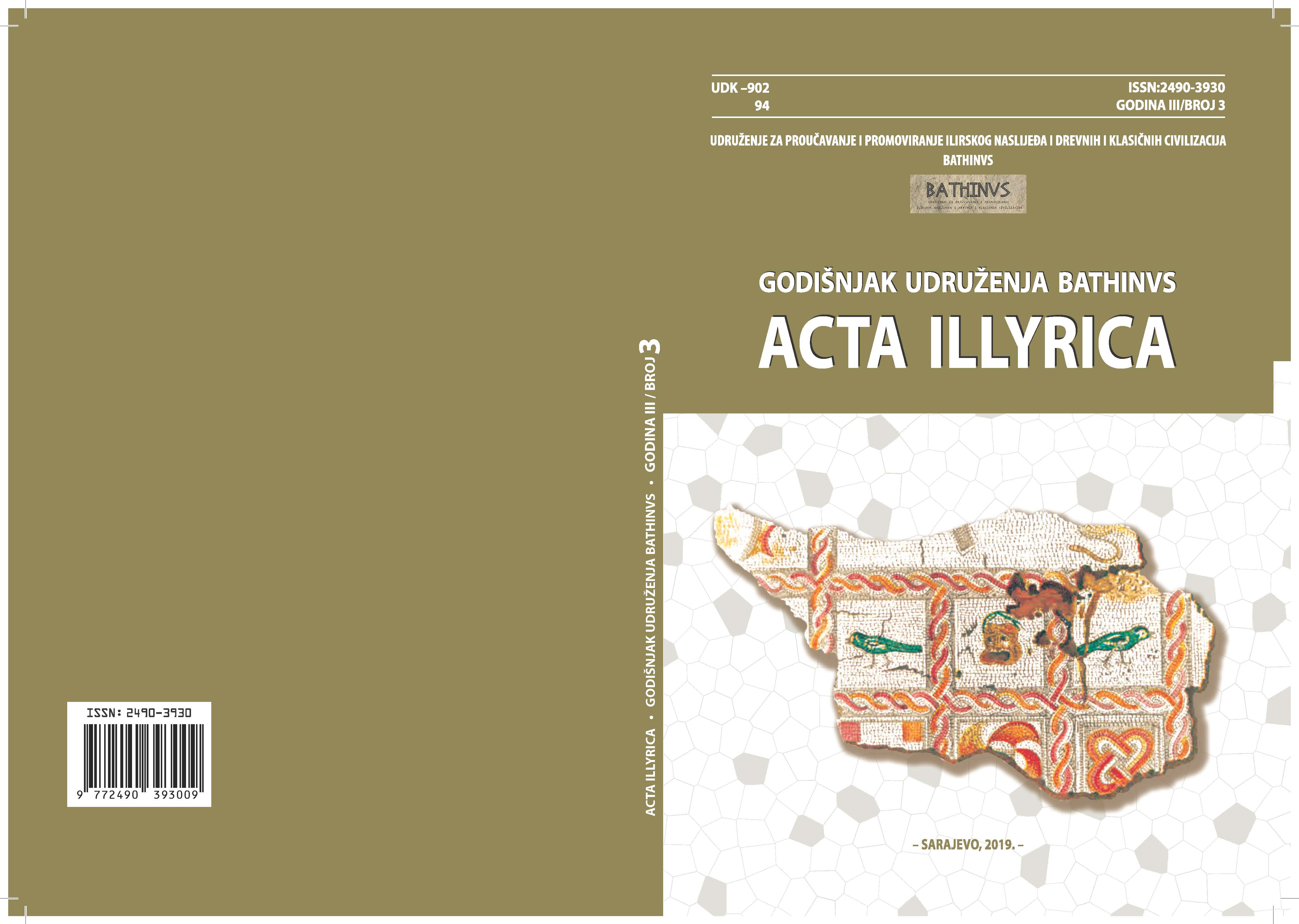Roman conquest of the Sarajevo Region and its consequences on the example of urbanism and Early Christian (Late Antiquity) architecture
Roman conquest of the Sarajevo Region and its consequences on the example of urbanism and Early Christian (Late Antiquity) architecture
Author(s): Amra Šačić Beća, Edin VeletovacSubject(s): Archaeology, Cultural history, Architecture, Economic history, Local History / Microhistory, Social history, Ancient World, Rural and urban sociology
Published by: Udruženje za proučavanje i promoviranje ilirskog naslijeđa i drevnih i klasičnih civilizacija “BATHINVS”
Keywords: Sarajevo;Daesii (Daisioi);Daesitiates;Bellum Pannonicum;Bellum Batonianum; Octavian; Tiberius; the Bosna River; municipium; colonia; res publica; Aquae S; Roman emperors; beneficiarii consularis;
Summary/Abstract: Observed from the Roman perspective, the territory of the modern capital of Bosnia and Herzegovina and its wider area was a deep and inaccessible heartland of Illyricum, subsequently the Roman province of Dalmatia. This territory had been conquered by the Romans for many decades, as evidenced in the works of Greco-Roman authors. Based on the analysis of source materials and the critical approach of the modern literature, in this paper, the authors have offered a chronological review of Roman conquests of the Sarajevo Region. Following the military and political events that refer to the oldest population of the Daesitiates, that we know by name, in the period of 33 BC to 9 AD, we have established the conquest phases of the upper course of the Bosna River and the valleys of Željeznica and Miljacka Rivers. The second part of the text lists all the arguments why Roman itineraries and other geographic sources do not mention the Roman settlement near Ilidža or the administrative unit (municipium) whose territory included the Sarajevo Region. The issue of administrative development of municipium Aquae was interpreted through a critical analysis of the texts carved on epigraphic monuments. In this context, we paid attention to the name of this municipal unit. By comparing the text carved on two epigraphic monuments that holds the name of the municipal unit of Aquae, it was determined that we need to give precedence to the name carved on the base of the statue of Emperor Diocletian (284-305 AD) because this inscription belongs to the category of public inscriptions unlike the inscription found on a tombstone of a local elite in Krivoglavci. In addition, the second part of the paper analyses the Early Christian architecture found in the Sarajevo Region. The analysis includes the period from the 4th to the 6th centuries AD, and in its final part, it will offer certain guidelines regarding the Christianization process and the earliest Church organization in this region for the purpose of posing new questions that will assist in finding a solution to this important problem in future research.
Journal: Godišnjak Udruženja BATHINVS “Acta Illyrica”
- Issue Year: 3/2019
- Issue No: 3
- Page Range: 31-62
- Page Count: 32
- Language: English

